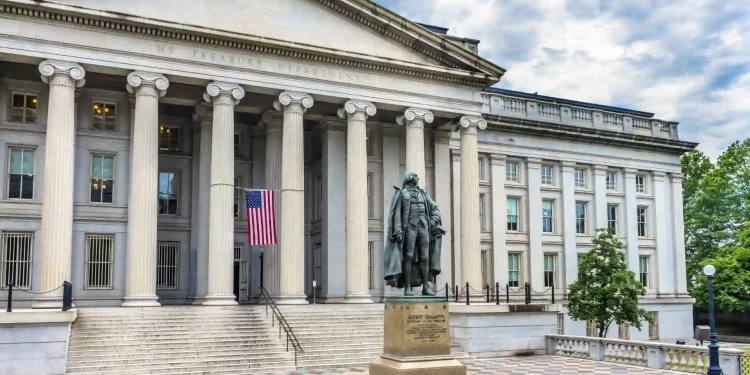The US Department of Treasury closely monitors any currency which is on this list by continuously evaluating the country’s macroeconomic policies and currency practices
The Department of Treasury of the US released its semi-annual report on global economic progress and FX rates 2 days back and removed India from its currency monitoring list. This can give INR the boost it requires, as when a currency is listed in the currency monitoring list of the United States, that currency is considered to be a ‘currency manipulator. There are 4 other countries whose currency got delisted from this list by the United States: Italy, Thailand, Mexico, and Vietnam. This could be a sigh of relief for all these economies.
The Indian currency was there on this list for the past 2 years, and India is one of the major export-import partners of the US; this listing impacted the currency valuation to a great extent. The United States Department of Treasury closely monitors any currency which is on this list by continuously evaluating the country’s macroeconomic policies and currency practices.
While India and the other 4 countries are removed from the list, China, Korea, Japan, Germany, Singapore, Malaysia, and Taiwan are still there. This can be another advantage for economies banking on China plus one strategy.
What does the currency monitoring list mean?
If a currency is listed for monitoring, it indicates that the nation manipulates the currency valuation through unfair practices. The currency’s value is determined artificially, and the value is decreased so that the country can get illegitimate benefits over other currencies. The reason is simple: when a currency value is lower, the export expense will be lowered, and that nation will be able to export more. However, this is unfair to other countries, and thus the United States Treasury Department always keeps an eye on every country’s currency who are in close association with the United States for export-import. In this list, there are 20 currencies which are of those countries which are the top trading partners of the United States.
There are 3 criteria for being listed as a currency manipulator, and any nation meeting 2 out of the 3 will get listed. These criteria are:
- A minimum of $20 billion trade surplus with the US in the past 12 months
- In the last 12 months, if the material currency account surplus becomes equivalent to a minimum of 2% of the GDP of the nation.
- If the net purchase of foreign currency amounts to a minimum of 2% of the nation’s GDP in at least 6 months out of the past 12 months
Any of these three criteria met by any trading partner of the United States will be listed as a currency manipulator. Then for two consecutive semi-annual reports, the currency will be monitored and stays on the list. The currency will get delisted after this period if it doesn’t meet 2 out of 3 criteria at the least. India presently meets only 1 criterion and thus has been delisted.
Effect of delisting on the currency and economy
Getting delisted from this currency manipulator list can be a boon for the nation. The country won’t be tagged as a currency manipulator anymore, and the currency’s value can grow fairly. Indian currency getting delisted will help the central bank of India, RBI, to manage the exchange rate with multiple measures effectively. This can be beneficial to the stock market in the country as well and also will add to the growth of the economy.
Since the United States, UK, and other developed nations are looking towards implementing a China plus one strategy to diversify the production base from China to other countries, the removal of the currency manipulator label can be highly advantageous for India, Vietnam, Thailand, Italy, and Mexico.



















